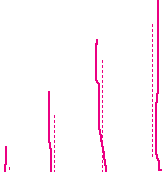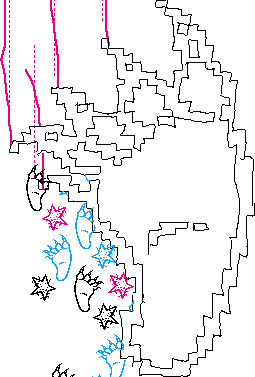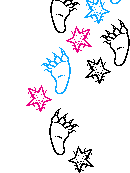| (1) GENERATION FLASH (2) FAQ (3) UTOPIA IN SOFWARE (4) THE UNBEARABLE LIGHTNESS OF FLASH (5) ART, MEDIA AND SOFTWARE ART (6) POSTSCRIPT LEV MANOVICH, 2002 (7) WEBSITES, THE ART OF OUR TIMES MILTOS MANETAS , 2002 (8) FLASH IS POPTECH PETER LUNENFELD, 2001
Art, Media Art, and Software Art by Lev Manovich
Recently “software art” has emerged as the new dynamic area of new media arts. Flash’s ActionScript, Director’s Lingo, Perl, MAX, JavaScript, Java, C++, and other programming and scripting languages are the medium of choice of a steadily increasing number of young artists. Thematically, software art often deals with data visualization; other areas of creative activity include the tools for online collaborative performance / composition (Keystroke), DJ/VJ software, and alternatives to / critiques of commercial software (Auto-illustrator), especially the browsers (early classics like Netomat, Web Stalker, and many others since then). Often, artists create not singular works but software environments open for others to use (such as Alex Galloway’s Carnivore.) Stylistically, many works implicitly reference visual modernism (John Simon seems to be the only one so far to weave modernist references in his works explicitly). Suddenly, programming is cool. Suddenly, the techniques and imagery that for two decades were associated with SIGGRAPH geek ness and were considered bad taste – visual output of mathematical functions, particle systems, RGB color palette – are welcomed on the plasma screens of the gallery walls. It is no longer October and Wallpaper but Flash and Director manuals that are the required read for any serious young artist. Of course from its early days in 1960s computer artists have always wrote their own software. In fact, until the middle of the 1980s, writing own software or at least using special very high-end programming languages designed by others (such as Zgrass) was the only way to do computer art.[5] So what is new about the recently emerged phenomenon of software art? Is it necessary? Let’s distinguish between three figures: an artist; a media artist; and a software artist. A romantic/modernist artist (the nineteenth century and the first half of the twentieth century) is a genius who creates from scratch, imposing the phantoms of his imagination on the world. Next, we have the new figure of a media artist (the 1960s – the 1980s) that corresponds to the period of postmodernism. Of course modernist artists also used media recording technologies such as photography and film but they treated these technologies similar to other artistic tools: as means to create an original and subjective view of the world. In contrast, postmodern media artists accept the impossibility of an original, unmediated vision of reality; their subject matter is not reality itself, but representation of reality by media, and the world of media itself. Therefore these media artists not only use media technologies as tools, but they also use the content of commercial media. A typical strategy of a media artist is to re-photograph a newspaper photograph, or to reedit a segment of TV show, or to isolate a scene from a Hollywood film / TV shows and turn it into a loop (from Nam June Paik and Dara Birnbaum to Douglas Gordon, Paul Pffefer, Jennifer and Kevin McCoy) Of course, a media artist does not have to use commercial media technologies (photography, film, video, new media) –s/he can also use other media, from oil paint to printing to sculpture. The media artist is a parasite who leaves at the expense of the commercial media – the result of collective craftsmanship of highly skilled people. In addition, an artist who samples from / subverts / pokes at commercial media can ultimately never compete with it. Instead of a feature film, we get a single scene; instead of a complex computer game with playability, narrative, AI, etc. we get just a critique of its iconography. Thirty years of media art and postmodernism have inevitably led to a reaction. We are tired of always taking existing media as a starting point. We are tired of being always secondary, always reacting to what already exists. Enter a software artist – the new romantic. Instead of working exclusively with commercial media – and instead of using commercial software – software artist marks his/her mark on the world by writing the original code. This act of code writing itself is very important, regardless of what this code actually does at the end. A software artist reuses the language of modernist abstraction and design – lines and geometric shapes, mathematically generated curves and outlined color fields – to get away from figuration in general, and cinematographic language of commercial media in particular. Instead of photographs and clips of films and TV, we get lines and abstract compositions. In short, instead of QuickTime, we use Flash. Instead of computer as a media machine – a vision being heavily promoted by computer industry (and most clearly articulated by Apple who promotes a MAC as a “digital hub” for other media recording / playing devices), we go back to computer as a programming machine. Programming liberates art from being secondary to commercial media. The similar reason may be behind the recent popularity of “sound art.” While commercial media now uses every possible visual style, commercial sound environments still have not appropriated all of sound space. While rock and roll, hip-hop, and techno have already become standard elevator music (at least in more hip elevators such as the Hudson Hotel in NYC), it seems that the rhythm-less regions of sound space are still untouched – at least for now.
|
![]()
 |
 |
 |